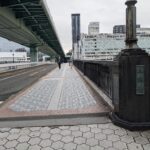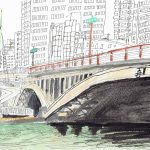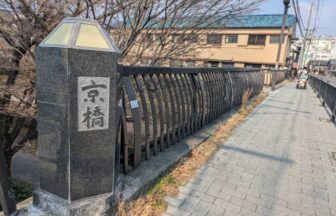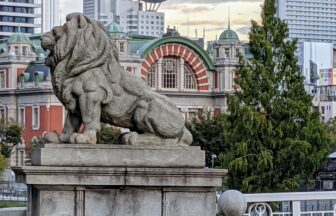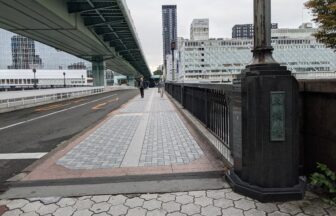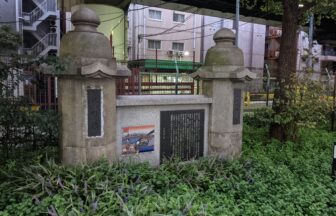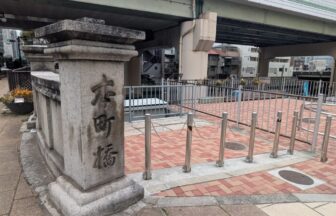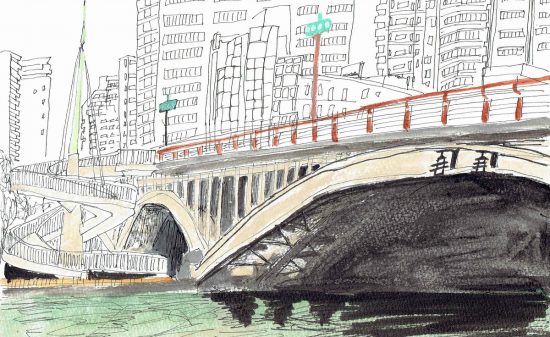Shinsaibashi: Once a Merchant-Supported Town Bridge, Now Osaka’s Premier Shopping District
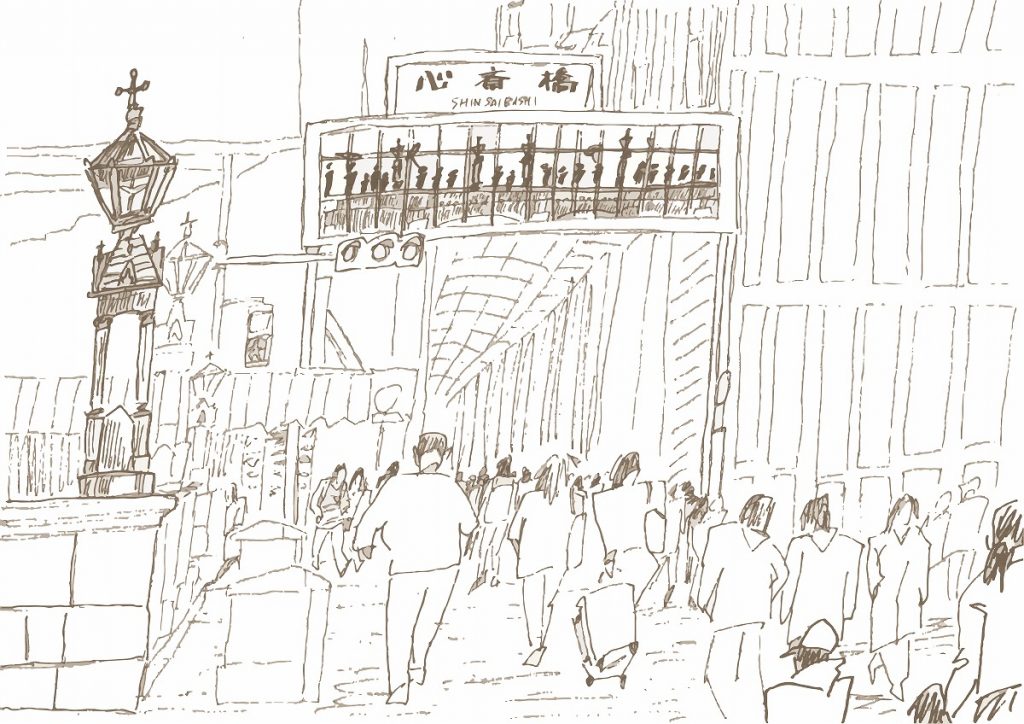
Illustration by Hiroki Fujimoto
Shinsaibashi(Osaka City, Chuo Ward)
Shinsaibashi-suji Shopping Street is an arcade-lined commercial district located one block east of Midosuji, Osaka’s main thoroughfare. While traditional sushi restaurants and tea shops still stand, most of the stores today cater to younger crowds, including fashion boutiques, variety stores, drugstores, arcades, and fast-food chains. It is one of Osaka’s busiest entertainment districts, bustling with people even late at night.
However, despite its name, there is no actual bridge at this location today.
Contents
Shinsaibashi in the Edo Period
There are various theories about when Shinsaibashi was first constructed. The most widely accepted view is that it was built in Genna 8 (1622) when Nagahori River was excavated. The bridge was constructed by a merchant named Okada Shinsai, after whom it was named.
Shinsai was a Fushimi merchant from Kyoto who later moved to Osaka. He was born in Tensho 3 (1575), meaning he built Shinsaibashi at the age of 47. He also contributed significantly to the excavation of Nagahori, collaborating with fellow merchants from Fushimi to complete the bridge.
Given its origins, Shinsaibashi was a privately funded town bridge, and its maintenance was entrusted to the local townspeople.
During the Edo period, all bridges were made of wood, requiring frequent repairs. Osaka, being a city of waterways, often suffered from floods, and its dense wooden buildings made fires a constant threat. As a result, it is believed that Shinsaibashi underwent frequent reconstruction and maintenance.
Records in the Kikuyamachi Documents provide detailed accounts of bridge repairs. They indicate that shop owners at both ends of the bridge were responsible for overseeing maintenance. Additionally, residents living along the bridge approach participated in preservation efforts.
During construction, the bridge was closed to traffic, and notice boards were placed to inform the public. A “chōdai” (town representative), similar to a modern-day neighborhood association leader, patrolled the site and acted as the project supervisor.
The Cost of Reconstruction in Kyōwa 2 (1802)
In Kyōwa 2 (1802), Shinsaibashi underwent a full reconstruction, costing approximately 20 kan.
- Based on rice prices at the time, this would be around 20 million yen in today’s currency.
- Based on labor wages, the equivalent cost could be closer to 100 million yen.
Although exact comparisons are difficult due to shifting values of commodities, 20 kan was undeniably a huge sum.
Raising funds for the project was not easy. To cover part of the costs, the wood from the demolished bridge was sold as lumber. Additionally, the merchants at both ends of the bridge covered one-quarter of the total expenses. Since there were only four shops, each had to pay one-sixteenth of the total cost—a significant financial burden.
However, owning a shop at the end of a bridge was a mark of prestige. These locations had high foot traffic, making them prime spots for business. For merchants, being positioned at Shinsaibashi’s entrance was a source of pride.
The Grand Opening Ceremony
When the new bridge was completed, a spectacular “Watari-zome” (first crossing) ceremony was held.
The bridge was decorated, and locals were offered sacred sake, zōni (New Year’s soup), and rice cakes. In a celebratory atmosphere, mochi was tossed to the gathered crowd, creating a lively and festive occasion.
At this time, Shinsaibashi measured approximately 35 meters in length and 4 meters in width.
Shinsaibashi in the Meiji, Taisho, and Showa Eras
In Meiji 6 (1873), Shinsaibashi was converted into an iron bridge. The arch-shaped truss bridge, imported from Germany, became a major attraction, drawing significant public interest.
At the time, bridges were typically built with piers, but this truss bridge had none, making it an unusual and innovative structure for its time.
The bridge measured 36.7 meters in length and 3.9 meters in width, making it comparable in scale to the wooden bridges of the Edo period.
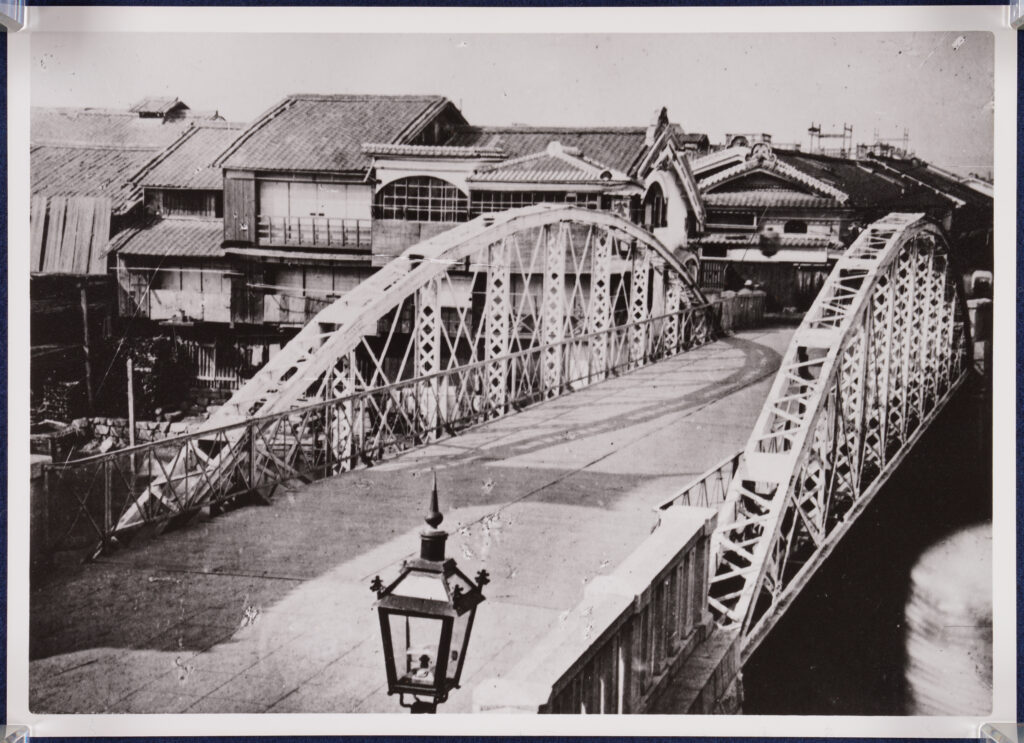
Shinsaibashi in the Meiji Era (Osaka Municipal Library Collection)
In Meiji 42 (1909), with the extension of the city tramway along the north bank of Nagahori, Shinsaibashi was rebuilt as a stone arch bridge.
Designed with Western-style architectural elements, this elegant structure became a symbol of the bustling Shinsaibashi district, which was Osaka’s largest commercial area at the time.
The bridge was illuminated by gas lamps, a rare feature in Osaka during this period. The eight gas lamps installed on the bridge became a well-known attraction and a frequent topic of conversation among locals.
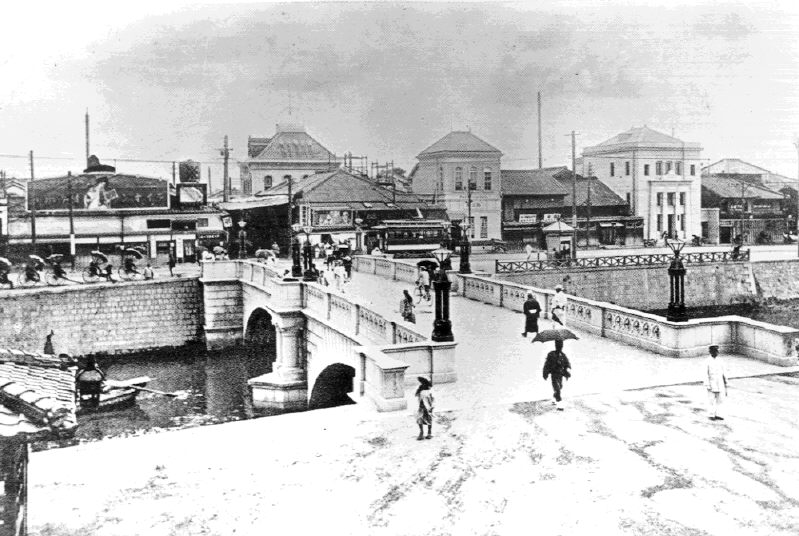
Shinsaibashi in the Taisho Era (Osaka Municipal Library Collection)
![Shinsaibashi (Meiji 42 [1909] – Showa 37 [1962])](https://bridgeist.thebridge.co.jp/en/wp-content/uploads/2016/12/shisaibashi-old-01.jpg)
Shinsaibashi (Meiji 42 [1909] – Showa 37 [1962])
By Showa 39 (1964), the Nagahori River had been completely erased, and Shinsaibashi was dismantled shortly before that.
However, as a symbol of both the Shinsaibashi shopping district and Osaka itself, there was strong local opposition to losing the bridge entirely. In response, the stone railings of the original bridge were preserved and relocated to a pedestrian overpass.
This overpass, built on the road that replaced the Nagahori River, retained the essence of the old Shinsaibashi. Just as in the past, it continued to watch over the countless people passing through this vibrant district.
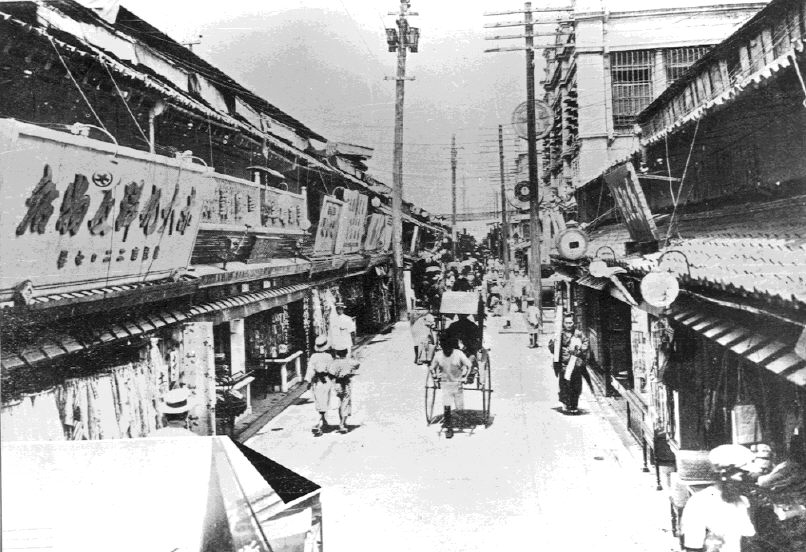
Bustling Shinsaibashi (Osaka Municipal Library Collection)
Shinsaibashi Today
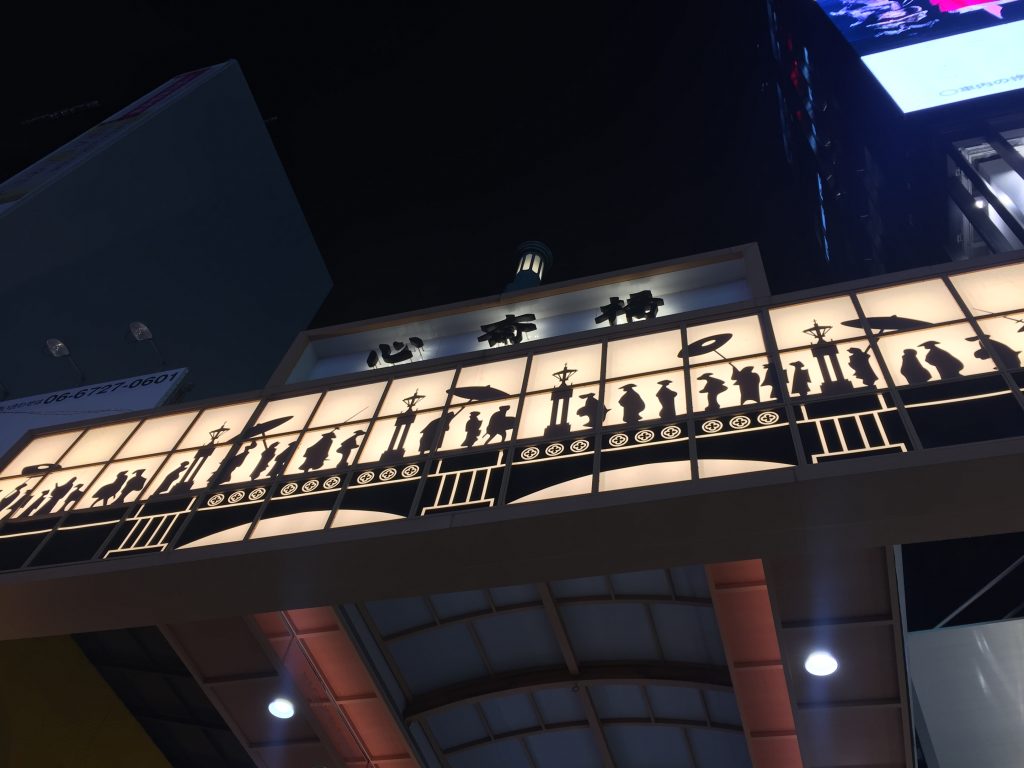
The arcade of Shinsaibashi Shopping Street remains a key feature of this bustling commercial district.
The pedestrian overpass, which once carried the stone railings from the old Shinsaibashi bridge, was removed in Heisei 8 (1996) due to the extension of the Nagahori Tsurumi-ryokuchi Line.
Did this finally erase all traces of the original Shinsaibashi? Not quite.
The following year, the opening of Crysta Nagahori, an underground shopping street built along Nagahori-dori, brought Shinsaibashi’s historic elements back to life. The stone railings and gas lamps were reconstructed in the exact location where the original bridge once stood.
Crysta Nagahori’s glass-paneled ceiling was designed to resemble the flow of the former Nagahori River, a tribute to its lost waterway.
If you’ve ever visited Shinsaibashi, chances are you’ve crossed this “bridge”—the busy pedestrian crossing at the intersection of Shinsaibashi-suji Shopping Street and Nagahori-dori, right by Shinsaibashi Station. It’s always crowded, leaving little time to pause and take in the surroundings. But if you glance to the side, you’ll notice retro-style gas lamps and the familiar stone railings, now seemingly out of place in the middle of a bustling street. Despite its transformations, the spirit of Shinsaibashi still lingers here.
But that’s not the only trace of the old Shinsaibashi.
Another remnant of the past can be found elsewhere—the arch-shaped truss bridge that preceded the stone version.
This truss bridge, removed in Meiji 41 (1908), was relocated to the Sakaigawa Canal, connecting the Ajigawa and Shirinashi Rivers, where it was renamed Sakaigawa Bridge. Over the years, it was moved multiple times, becoming Shin-Senbune Bridge over the Owada River in Nishiyodogawa Ward, and later, Suzukake Bridge in Tsurumi Ryokuchi Park. Today, it survives as Ryokuchi-Nishi Bridge, still standing within Tsurumi Ryokuchi Park—a piece of Shinsaibashi’s history in an unexpected place.
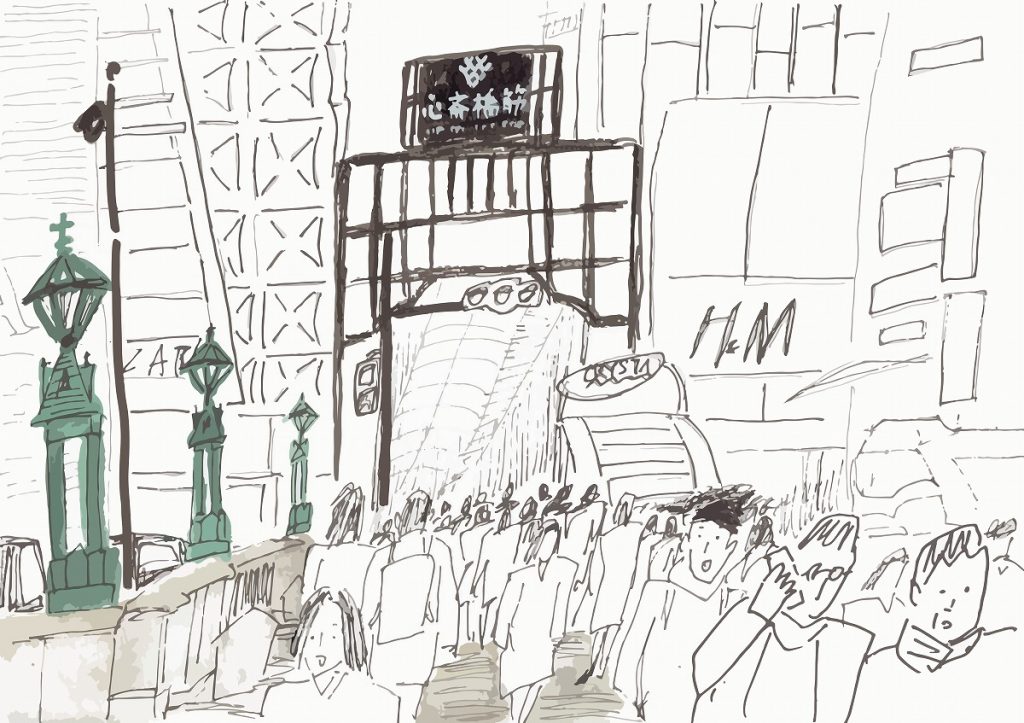
ShiShinsaibashi
Illustration by Hiroki Fujimoto
Shinsaibashi Overview
First Generation Shinsaibashi (Arch-Shaped Truss Bridge)
- Constructed: Meiji 5 (1873)
- Removed: Meiji 41 (1908)
- Subsequent Relocations and Name Changes:
- Meiji 41 (1908) – Showa 3 (1928): Sakaigawa Bridge
- Showa 3 (1928) – Showa 46 (1971): Shin-Senbune Bridge
- Showa 46 (1971) – Heisei 1 (1989): Suzukake Bridge
- Currently known as Ryokuchi-Nishi Bridge, located in Tsurumi Ryokuchi Park
Despite being called the “First Generation Shinsaibashi”, it actually spent the longest time as Shin-Senbune Bridge.
Access to Ryokuchi-Nishi Bridge:
- 16-minute walk from Tsurumi-Ryokuchi Station (Osaka Metro Nagahori Tsurumi-Ryokuchi Line)
- Located inside Tsurumi Ryokuchi Park, west of the Great Lawn Plaza, on the way to the west entrance.
Second Generation Shinsaibashi (Stone Arch Bridge)
- Constructed: Meiji 42 (1909)
- Removed: Around Showa 39 (1964)
After its removal, its stone railings were transferred to a pedestrian overpass, which itself was later removed in Heisei 8 (1996).
Current Status:
- The stone railings and gas lamps have been reconstructed at the original site of Shinsaibashi (the intersection of Shinsaibashi-suji and Nagahori-dori).
Access:
- Immediately accessible from Shinsaibashi Station (Osaka Metro Midosuji Line & Nagahori Tsurumi-Ryokuchi Line).
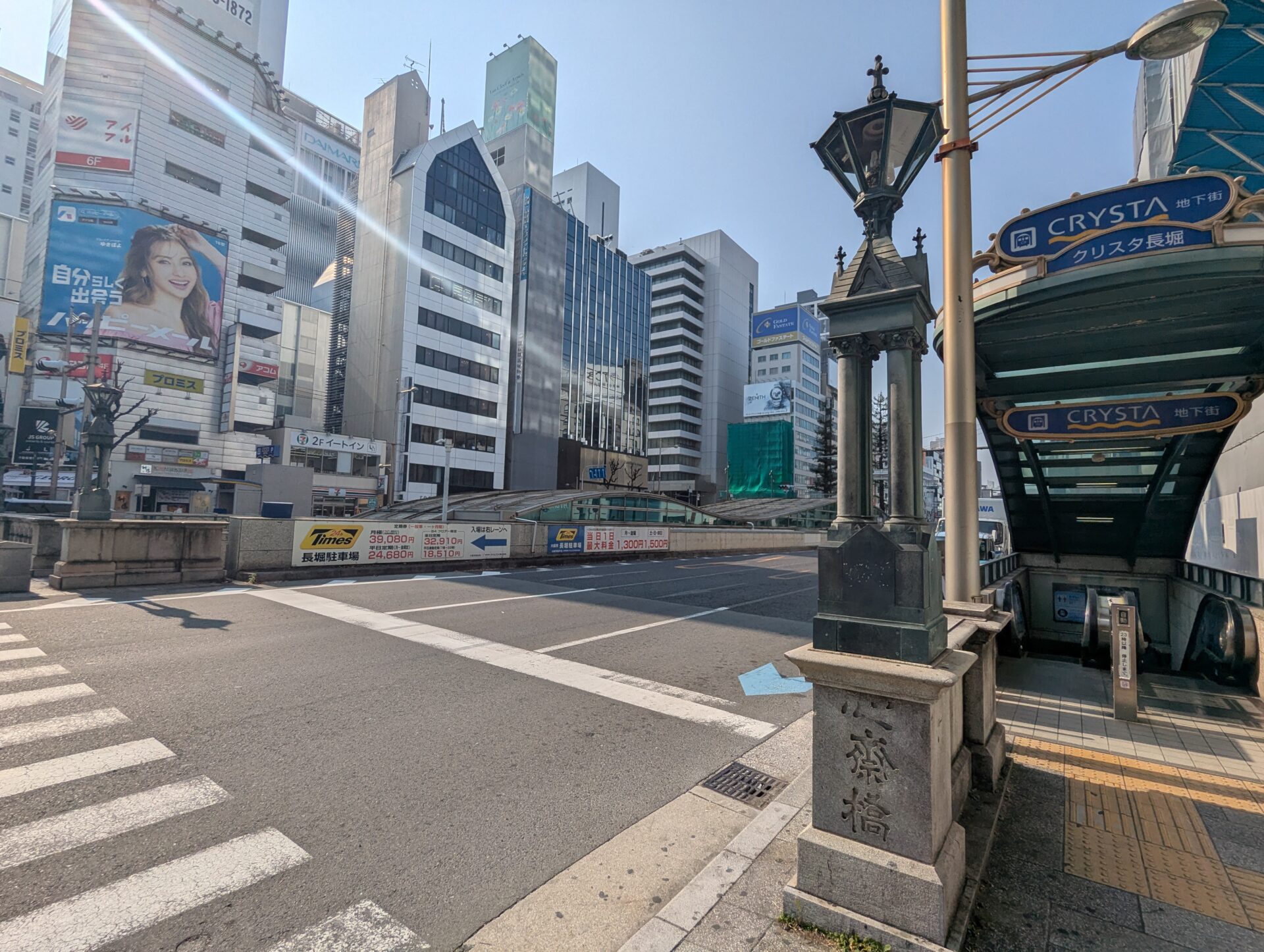
Shinsaibashi

